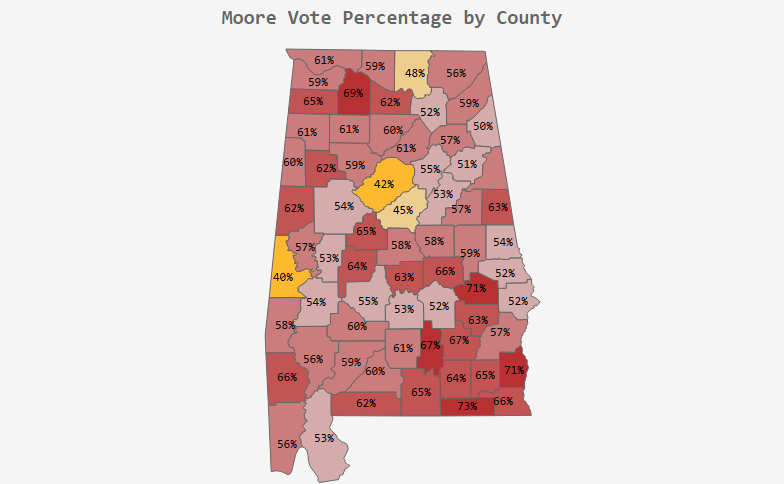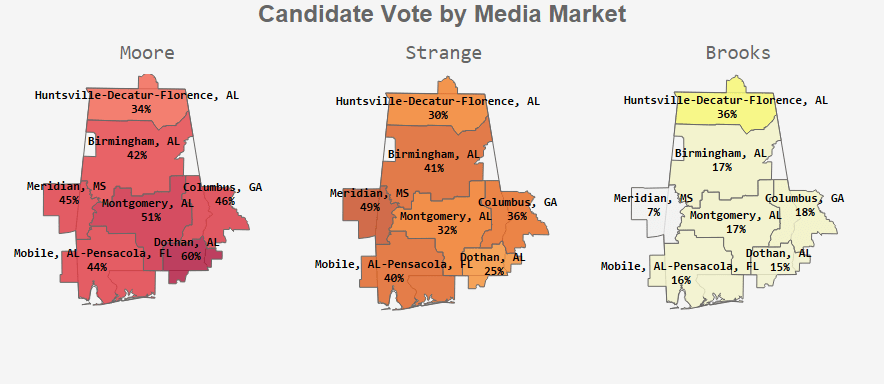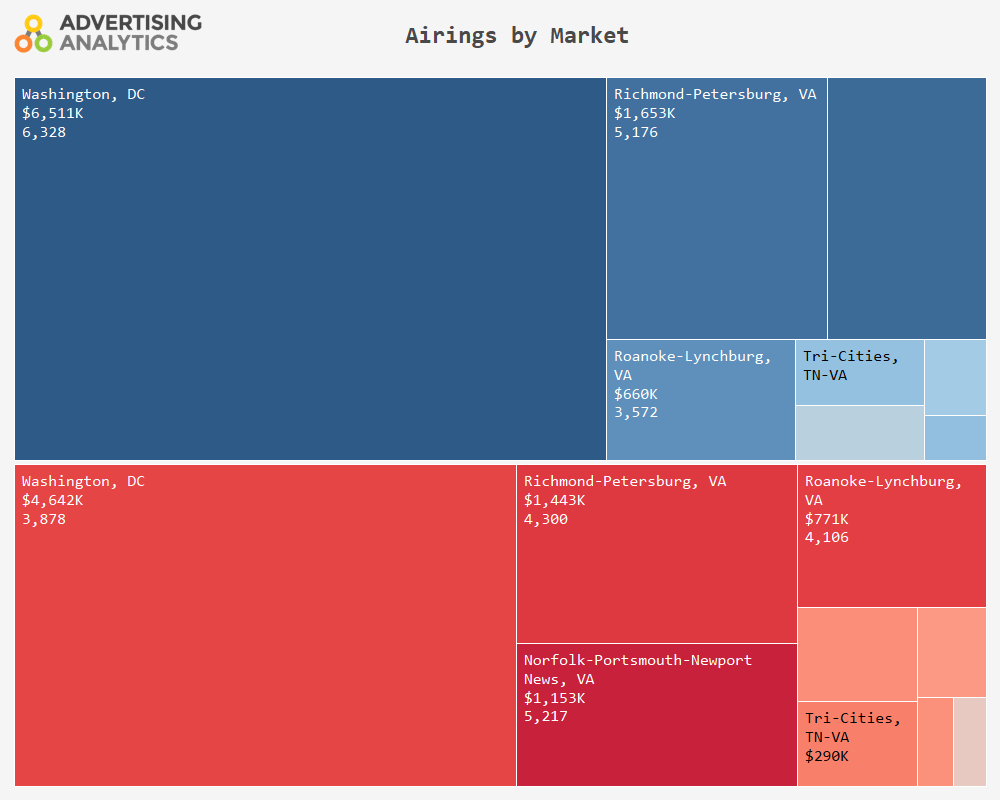September 28, 2017
Alabama Runoff Overview
On September 26th the people of Alabama went to the polls to cast their ballots to decide whether Judge Roy Moore would carry on his momentum from the primary and unseat the incumbent, Luther Strange. The answer was a resounding yes. Judge Moore defeated Strange with 54.6% of the vote, a margin of 44,138 votes. The victory of Judge Moore, a politician very much in President Trump’s image, despite the President’s endorsement of Senator Strange, will raise pressing questions for Republican Party establishment heading into 2018.
Spending
Just as in the primary, Luther Strange and allied outside groups greatly outspent Roy Moore. Senator Strange outspent Judge Moore 5 to 1, with outside groups accounting for 85% of the $5.8M of total spending.

Again, repeating a trend first noted in the primary, Moore drastically outperformed his spending. While his Cost Per Vote (CPV) was not quite as outstanding as it was in the primary ($1.77), it was still a remarkably low $4.03, compared to Strange’s $21.58. Despite President Trump’s endorsement of Senator Strange, Alabama voters embraced Judge Moore’s “Drain the Swamp” messaging, as well as his conservative credentials. Judge Moore was very successful in tying Luther Strange to Mitch McConnell – so successful, in fact, that Strange’s association with the Majority Leader outweighed the benefits of President Trump’s support. The ineffectiveness of President Trump’s endorsement seems to indicate that it is the message, not the messenger, that is carrying weight with Republican voters.

Roy Moore also benefited from the endorsement of Rep. Mo Brooks. Rep. Brooks represents a district that consists mostly of the Huntsville market, and his elimination in the primary made his endorsement extremely valuable. Huntsville was the most evenly divided market between the three candidates in the primary, and many suspected that his endorsement would carry significant weight with his voters. However, the primary attack ads “Mo Never Trump” and “Trust” run by Luther Strange and Senate Leadership Fund against Mo Brooks likely precluded him from ever giving his endorsement to Strange. Sure enough, after Brooks’ endorsement of Moore, Huntsville went from an area that was his weak point in the primary, to one that was solidly in his camp for the run-off. In the end Moore won by a significant enough margin that Brooks’ endorsement was not the deciding factor, though it was still a major advantage in solidifying his support in one of the key areas of the state.
The following map shows Moore’s percentage of total vote by county. Counties colored orange were won by Strange, while the red counties were won by Moore, shaded by margin of victory. It is notable that while Strange only won four counties, three of them were amongst the four biggest counties in the state. It seems that the urban-rural voting divide is not limited to general elections, it is a powerful factor even in a Republican runoff in Alabama.

Looking Forward
Moore’s victory may go down as a monumental shift in Republican politics. Alabamian voter’s embrace of Moore, a maverick candidate who resembles President Trump in many ways, holds many potential lessons for the political class. The elements that led to the election of President Trump still resonate with voters, and there is a considerable block of voters who want to send a message to Washington. Just like Trump in 2016, Moore succeeded with a “drain the swamp” message. Electoral trends can shift very quickly, but 2018 is already shaping up to have several elections that may resemble this one in pitting an outsider candidate against an establishment-backed one. Jeff Flake already looks to be facing a serious primary challenge, and the retirement of Bob Corker in Tennessee opens up another seat for what will no doubt be a fierce primary battle between establishment-backed candidates and the Bannon wing of the party. Insurgent candidates will look to see what worked so successfully for Judge Moore and President Trump in 2016, while incumbents and establishment candidates will look to avoid the mistakes that doomed Senator Strange. On December 12th Roy Moore will take on the Democrat, Doug Jones, in the general election. While Jones is a fairly strong candidate for a Democrat in Alabama, it’s overwhelmingly likely that Roy Moore will take his Alabamian values to D.C.






